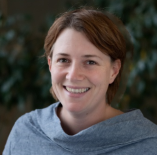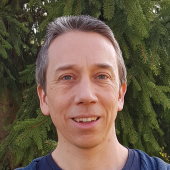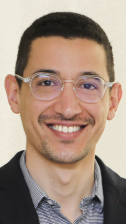|
|
|
Lectures and Keynotes > Day 5 - Applications of Deformation in RoboticsDay 5 - Applications of Deformation in Robotics
9:30-11:00: Deformations at different scales: Underwater Tether Modelisation and Applications & Continuum robots for manipulation at small scale - Claire Dune and Guillaume LaurentAbstract: Underwater robots are still connected to a surface station by a cable, which provides communication, power and a secure physical link. As ROVs become increasingly miniaturized, the presence of this cable becomes a major factor in their dynamic equation, and the weight and drag induced by the water column hamper their mobility. Knowing how to model these cables, knowing how to wind them up or release them wisely, knowing how to position control points intelligently, whether actuated or passive, makes it possible to counteract these effects, or even take advantage of them. ROVs deploy their cables over kilometers, deploying immense proprioceptive sensors spread over the entire water column. Modeling the expected shape of the cable and comparing it with the observed shape can help estimate currents in the water column. Knowing how to model the shape of the cable allows you to locate the ROV. The cable can then be used as a distributed network of sensors whose location is known (salinity, ph, noise, image). On the other side of the spectrum, microrobotics aims to develop small-size robots and precision robots able to handle micro and nano objects. Continuum robotics opens new ways to design such robots and raises new challenges. This presentation will tackle two questions: 1) what are the interests of making continuum robots at small scale? 2) due to their deformable nature, are continuum robots able to reach sufficient precision for handling micro-objects?
 Bio: After graduating from the Ecole Nationale Supérieure de Physique de Strasbourg in 2005, I defended my PhD thesis in 2009 on active vision methods for object grasping in an assistive robotics context, under the supervision of Eric Marchand and in collaboration with the CEA-LIST. I was then a post-doctoral fellow of the Japan Society for Science in the CNRS Joint Robotic Laboratory team at AIST, Tsukuba Japan, where I worked on predictive control for visual servoing of humanoid robot walking. Since 2010, I have been a lecturer at the University of Toulon. Between 2010 and 2014, my research focused on a vision-based gait analysis tool integrated into a smart walker. In January 2015, I joined the COSMER laboratory, where my research focuses on vision and sensor-based control for underwater robotics. I'm interested in ROV umbilical management, visual localization and diver-robot interactions. x
 Bio: Guillaume J. Laurent received his Ph.D. in control systems and computer sciences from the University of Franche-Comté in France, in 2002. He is currently associate professor at the National School of Mechanics and Microtechnologies (ENSMM) in Besançon. He is member of the Automatic Control and Micro-Mechatronic Systems Department of FEMTO-ST Institute, CNRS. His research interests include microrobotics, computer vision, parallel and continuum robots (https://gjlaurent.github.io/).
11:30-12:30: Keynote "Medical Applications: The Important Role of Continuum Robotics" - M. Taha ChikhaouiAbstract: Medical applications benefit from standard rigid-link robotics since the early 90's. Such robots offer repeatability, accuracy, and opened the scope for new clinical practices and operations. Rigid-link robots started with adaptation and integration of industrial counterparts - matured by several decades of developments - before a larger spread via dedicated systems. Continuum robots under development for medical applications are younger and specifically developed for given procedures with ever-growing technology. They drastically reduce the invasiveness, allow for novel diagnosis and therapy, and reach confined anatomy. This presentation focuses on major developments in the field, highlights some cutting-edge systems under research, and summarizes key challenges facing continuum robotics community.  Bio: M. T. Chikhaoui received his Ph.D. in Automatic Control from the University of Franche-Comté in 2016. His research was performed at FEMTO-ST Institute in Besançon, France, where he was affiliated with the Automatic Control and Micro-Mechatronic Systems (AS2M) Department. He is recipient of the Prix de Thèse 2016. He was a postdoctoral researcher at the Laboratory for Continuum Robotics, Leibniz Universität Hannover in Hanover, Germany between 2017 and 2018. Since 2019, he is a research scientist at CNRS (The French National Centre for Scientific Research), appointed to TIMC Laboratory in Grenoble, France with the Computer-Assisted Medical Interventions (CAMI) team. He serves in multiple editorial boards including IEEE Robotics and Automation Letters. The main focus of his research is continuum robotics for medical applications. His interests are based on an interdisciplinary approach including robotic design, modeling, innovative mechatronics, and control strategies based on perception, among others.
|


